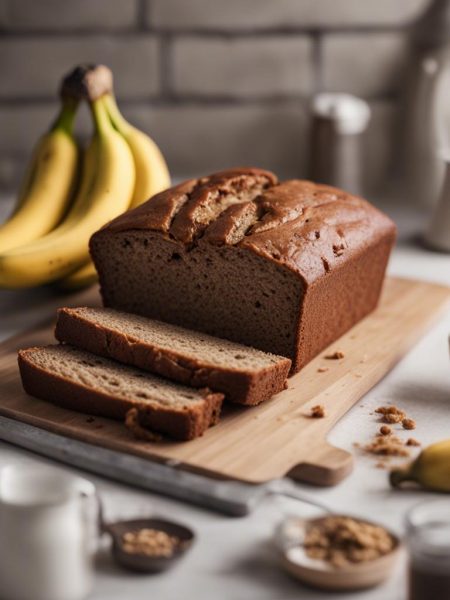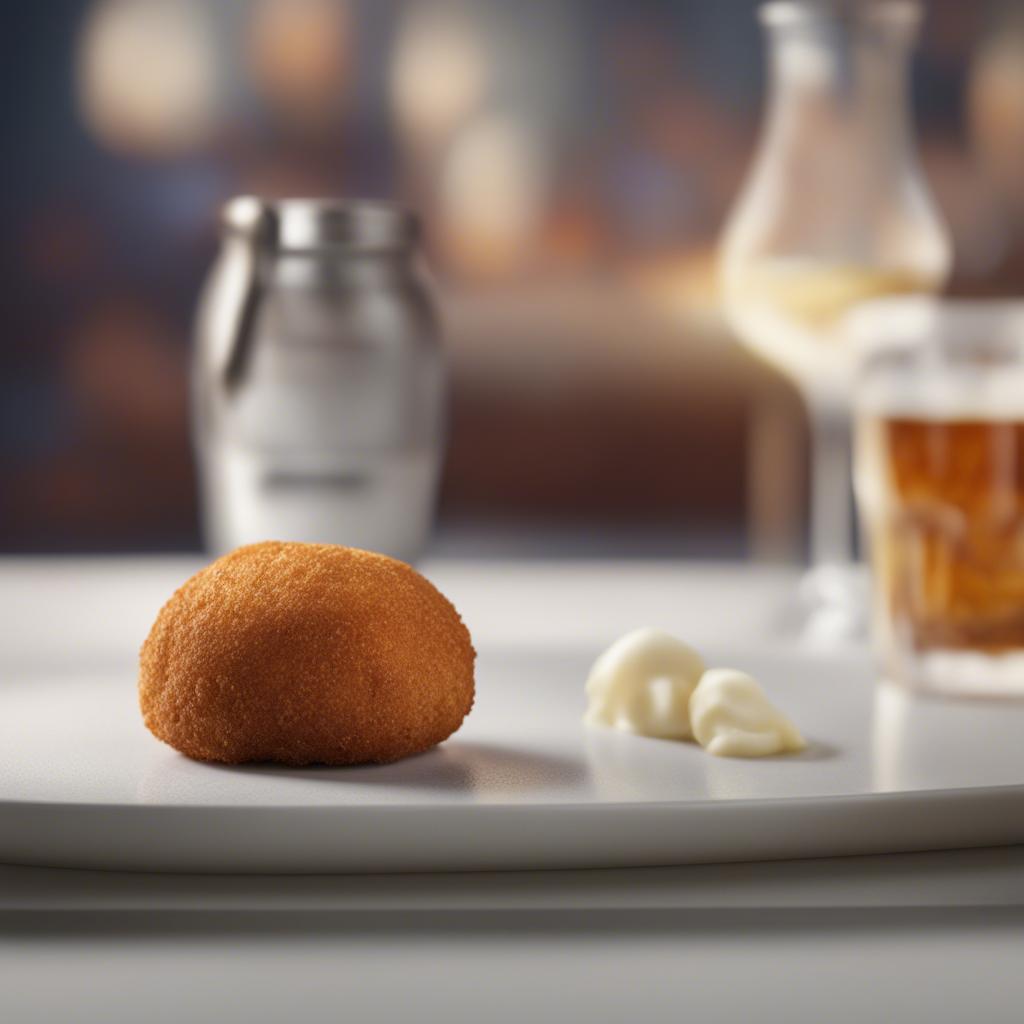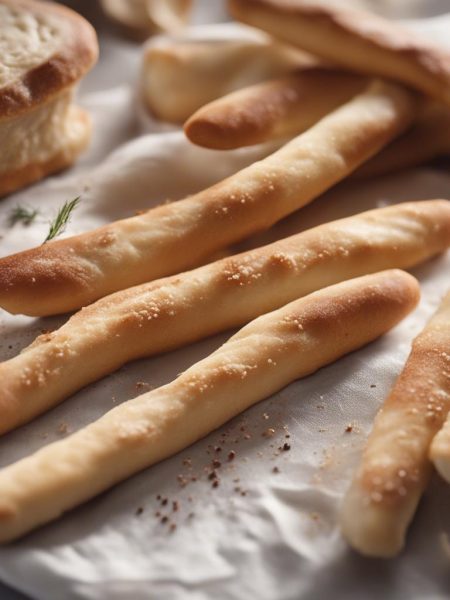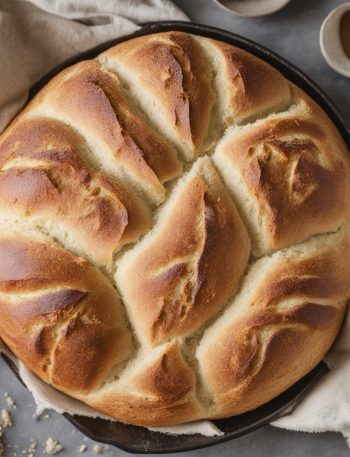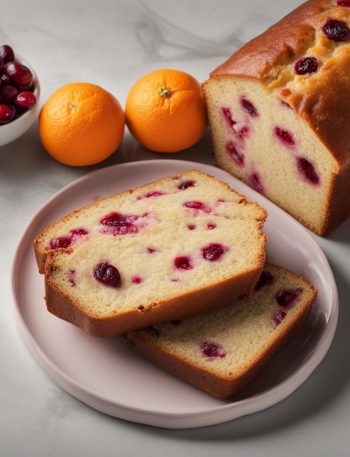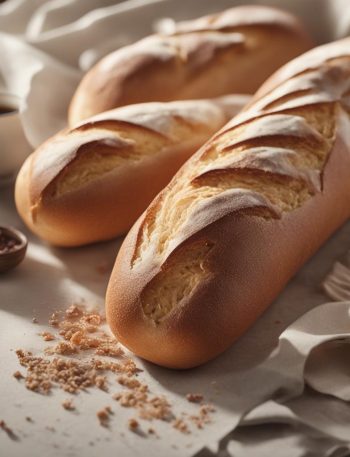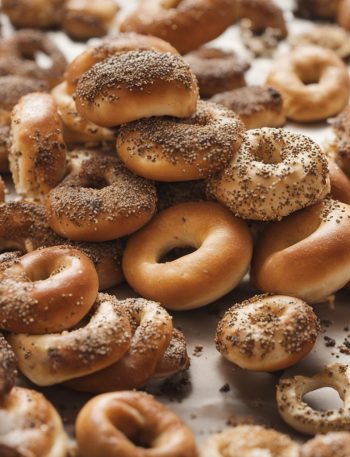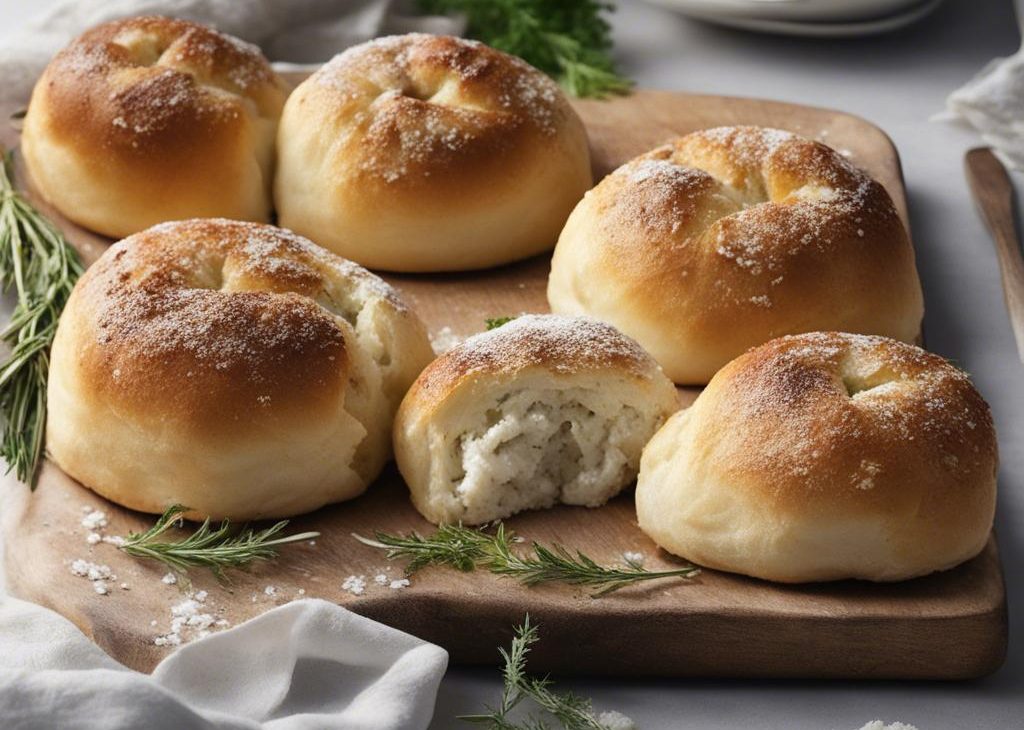
If you’re looking for a flavorful upgrade to ordinary dinner rolls, try these sea salt & herb skillet rolls. Infused with rosemary, basil, parsley, and garlic powder and topped with melted butter and flaky sea salt, each bite is as aromatic as it is delectable. They certainly steal all the attention from the main dish on the table! You can bake these soft and flaky rolls in an oven-safe skillet, but they’re just as tasty in a regular 9×13-inch baking dish.
There’s no arguing that homemade bread is delicious, but adding plenty of herbs, garlic powder, sea salt, and a brush of melted butter transforms ordinary bread into a flavorful indulgence. Let me show you how to make them so you can experience this BREAD BLISS too!
Tell Me About These Sea Salt & Herb Skillet Rolls
- Flavor: Enjoy rosemary, parsley, basil, and garlic all at once in a buttery roll with sea salt on top. This recipe has a range of some of the BEST flavors around. If you love the garlic, salt, and herb in this recipe, try this rosemary garlic pull apart bread or olive bread next—two favorites!
- Texture: In addition to the elevated flavor, the rolls have a wonderfully satisfying texture. Chewy edges seal in a soft and flaky roll and if you bake them in a cast iron skillet, the bottoms have a slight crisp. Don’t forget a little crunch on top from coarse or flaked sea salt. So much to love!
- Ease: Homemade bread or rolls can seem intimidating, but the recipe below is packed with thorough details so you can be confident in the kitchen. And if you’re new to baking with yeast, review my Baking with Yeast Guide.
- Time: Making rolls from scratch certainly takes time and they can be an afterthought when you’re preparing an entire meal. But after 1 taste of these homemade sea salt & herb rolls—you’ll realize they’re worth it. Set aside at least 3-4 hours from start to finish, but keep in mind most of that time is hands off as the dough rises. And you can get started ahead of time. See overnight instructions below.
Key Steps in This Recipe
- Making the dough. The dough comes together with basic kitchen ingredients including milk, yeast, sugar, egg, butter, salt, dried herbs, garlic powder, and flour. The sugar feeds the yeast and tenderizes the dough. You only need 2 Tablespoons of sugar. You can use all-purpose flour or bread flour in this recipe. All-purpose flour is convenient for most, but bread flour produces chewier dinner rolls.
- Kneading the dough. You can knead the dough with a mixer or with your hands.
- 1st rise. The dough rises in about 1-2 hours in a relatively warm environment.
- Shaping the rolls. Form the rolls into balls as if you were making regular dinner rolls. This dough recipe makes slightly fewer rolls.
- 2nd rise. Let the shaped rolls rise until puffy which takes up to 1 hour.
- Baking. Bake until the rolls are golden brown, around 25 minutes.
- Topping. Brush melted butter on warm rolls and top with sea salt.
Combine warm milk, yeast, and 1 Tablespoon sugar together in your mixing bowl. Cover and let the mixture sit for a few moments until foamy on top. In this step you are proofing the yeast to ensure it’s active (and not dead and/or expired). NOTE: I do this same step even if using instant yeast. It’s not always necessary as most yeast available these days is already active, but it takes just a few minutes and doesn’t hurt.
After the dough comes together, it will be soft and slightly sticky.
. After kneading, let the dough rise until doubled in size.
Punch it down to release the air and divide into 12 equal pieces. Shape into balls.
Arrange in your desired baking pan (I always use this 10.25 inch skillet). Let the rolls rise until puffy.
And then it’s time to bake.
Finish with Melted Butter & Sea Salt
The herb rolls are done when they’re golden brown… and when your kitchen smells like an herb garden. Brush warm rolls with melted butter and finish with sea salt. If you’re ever shopping online for sea salt and need a recommendation, I use and love Maldon flaky sea salt or this coarse sea salt from Whole Foods.
There’s a crunch from the salt on top and the centers are as soft as a mountain of cushy pillows. They’re truly out of this world warm from the oven and when you set them down on the table, all eyes will immediately dart over their way. (Impossible to resist!)

Sea Salt & Herb Skillet Rolls Recipe
Description
Sea salt & herb skillet rolls are the fluffiest, softest, most flavorful homemade rolls to have with dinner tonight!
Ingredients You’ll Need
Instructions
- Whisk the warm milk, yeast, and 1 Tablespoon sugar together in the bowl of your stand mixer. Cover and allow to sit for 5 minutes. *If you do not own a stand mixer, you can do this in a large mixing bowl and in the next step, mix the dough together with a large wooden spoon/silicone spatula. It will take a bit of arm muscle. A hand mixer works, but the sticky dough repeatedly gets stuck in the beaters. Mixing by hand with a wooden spoon or silicone spatula is a better choice.*
- Add the remaining sugar, egg, 2 Tablespoons butter, salt, rosemary, basil, parsley, garlic powder, and 1 cup flour. With a dough hook or paddle attachment, mix/beat on low speed for 30 seconds, scrape down the sides of the bowl with a silicone spatula, then add the remaining flour. Beat on medium speed until the dough comes together and pulls away from the sides of the bowl, about 2 minutes. If the dough seems too wet to a point where kneading (next step) would be impossible, beat in more flour 1 Tablespoon at a time until you have a workable dough. Dough should be soft and a little sticky, but still manageable to knead with lightly floured hands.
- Keep the dough in the mixer and beat for an additional 5 full minutes, or knead by hand on a lightly floured surface for 5 full minutes..) If the dough becomes too sticky during the kneading process, sprinkle 1 teaspoon of flour at a time on the dough or on the work surface/in the bowl to make a soft, slightly tacky dough. Do not add more flour than you need because you do not want a dry dough. After kneading, the dough should still feel a little soft. Poke it with your finger—if it slowly bounces back, your dough is ready to rise. You can also do a “windowpane test” to see if your dough has been kneaded long enough: tear off a small (roughly golfball-size) piece of dough and gently stretch it out until it’s thin enough for light to pass through it. Hold it up to a window or light. Does light pass through the stretched dough without the dough tearing first? If so, your dough has been kneaded long enough and is ready to rise. If not, keep kneading until it passes the windowpane test.
- Lightly grease a large bowl with oil or nonstick spray. Place the dough in the bowl, turning it to coat all sides in the oil. Cover the bowl with aluminum foil, plastic wrap, or a clean kitchen towel. Allow the dough to rise in a relatively warm environment for 1-2 hours or until double in size. (I always let it rise on the counter. Takes about 2 hours. For a tiny reduction in rise time, see my answer to Where Should Dough Rise? in my Baking with Yeast Guide.)
- Grease a 10-12 inch oven-safe skillet or 9×13-inch baking pan. If using cast iron skillet and it’s already seasoned, no need to grease it. You can also bake the rolls on a lined baking sheet.
- When the dough is ready, punch it down to release the air. Divide the dough into 12 equal pieces. (Just eyeball it—doesn’t need to be perfect!) Shape each piece into a smooth ball. Arrange in prepared skillet/baking pan or a couple inches apart on a lined baking sheet.
- Cover shaped rolls with aluminum foil, plastic wrap, or a clean kitchen towel. Allow to rise until puffy, about 45-60 minutes.
- Adjust oven rack to a lower position and preheat oven to 350°F (177°C). (It’s best to bake the rolls towards the bottom of the oven so the tops don’t burn.)
- Bake for 23-27 minutes or until golden brown on top, rotating the pan halfway through. If you notice the tops browning too quickly, loosely tent the pan with aluminum foil. Remove from the oven, brush warm rolls with remaining melted butter and sprinkle tops with sea salt. Cool for a few minutes before serving.
- Cover leftover rolls tightly and store at room temperature for 2-3 days or in the refrigerator for up to 1 week.
Frequently Asked Questions
Absolutely. I usually use garlic powder, dried rosemary, dried parsley, and dried basil because I have each on hand regularly. However, you can substitute with fresh minced garlic and fresh herbs instead. See recipe details below.

